#olfactory
Text
The 8 Senses




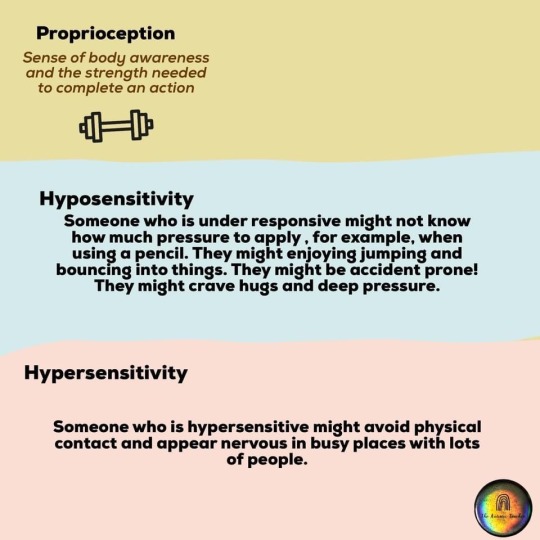




The Autistic Teacher
#autism#actually autistic#the 8 senses#Olfactory#tactile#auditory#Gustatory#visual#vestibular#Proprioception#Interoception#autism and the senses#sensory processing#sensory processing disorder#neurodivergence#neurodiversity#actually neurodivergent#feel free to share/reblog#The Autistic Teacher (Facebook)
348 notes
·
View notes
Text
petrichor
a distinctive scent, usually described as earthy, pleasant, or sweet, produced by rainfall on very dry ground.
Petrichor is an uncommon word used in mineral chemistry or geochemistry to describe the pleasant scent of rain falling on very dry ground. Petrichor is a compound of the Greek nouns pétrā “rock, stone” (as in petroleum “rock oil”) and īchṓr, the juice or liquid—not blood!—that flows in the veins of the Olympian gods. About 60 percent of ancient Greek words have no satisfactory etymology; īchṓr is one of them. Petrichor was coined by two Australian chemists, Isabel “Joy” Bear and Richard Grenfell Thomas, in 1964.
—https://www.dictionary.com/browse/petrichor
#quote#word#language#rain#petrichor#chemistry#etymology#minerals#mineral chemistry#scent#smell#olfactory#aromachology#olfaction#geology#water#geochemistry
219 notes
·
View notes
Text
i had to use mum and dad's ensuite bathroom earlier, they have a new different soap bar.
already don't like soap bars, they give horrible waxy feel on hands, and irritate skin. but this one have the worst smell. i am very sensitive to smell, like can smell people before i see them, can smell things don't even register to other people's senses.
i touch my face absentmindedly a lot, and as part of stimming. i play with my lips a lot especially, and put hands in mouth.
every time i put my hands near my face, i smell the bad soap, and nearly gag. i even try wash hands with different soap (nice smell body wash) to cover the smell, but it is so strong that it is back!!
worst worst thing. bad orange soap bar. yuck.
#words from my head#autism#autistic#sensory issues#sensory processing sensitivity#sensory processing disorder#sense of smell#olfactory
31 notes
·
View notes
Text
the minute rain hits the ground in certain places, it activates our senses, reminds us where we come from, reminds us where we're headed, too
today, i'm in the garden, hands empty, eyes closed, immersed in this heady scent, this dusky, earthy almost-ness
today, i am a wolf, nostrils flaring, muddy pawed
breathing—tasting
petrichor
azuki lynn
#poetry#prosetry#spilled ink#writerscreed#twc#poem#petrichor#rain#earth#wolf#olfactory#senses#garden#muddy#scent#memory#azukilynn#poets on tumblr
57 notes
·
View notes
Text

ContamFam asks: how to identify mushroom smells vs contam smells
MCX Answers: Hey mycopal! Budding community-mycologist you! 🍄❤️💅🏻
I often can smell mushrooms in the woods when I forage because of mycelium smell being so strong!
my most helpful tip for this question is: go to the grocery store as soon as you can, and smell every mushroom they have in the veggie section that has holes for passive fae. Mycelium, of at least fungus that produce fruit bodies (but potentially mycelium of other non fruiting fungi) has the same smell. The mushrooms in the wild you see, pick on and smell it. It should smell like the fresh grocery mushrooms you smelled.
Anything that smells described like: apples, alcohol, vinegar, rot, fetid, beer, ear wax, or ginger are all smells that are major indicators in my experience of contaminants both visible to your eye and not :)
Hope this helps!🍄❤️🍻
#mycology#lgbtqia2s#magic mushies#microbiology#mold#60s psychedelia#lgbtqia#lgbtqia2s+#myc#enby#queer#mushroom#smell#mycelium#how to#magic mushroom#contam#microbes#science#olfactory
23 notes
·
View notes
Text

to smell
oler
“I really like the smell of oleander.”
The sense of smell is also called the olfactory organ.
The flowers smell good.
Las flores huelen bien.
#smell#to smell#oler#oleander#flowers#olfactory#spanish#vocabulary#vocab#español#hint#mem#mnemonic#wotd#word of the day
15 notes
·
View notes
Photo




Diplomatic Ties part 511: E.G. Cappelli.
Jacket from Gieves & Hawkes, shirt from Shirtonomy, E.G. Cappelli tie, ps from Poszetka, trousers from Ströms and shoes from Sanders. Scent: Rochas Tocade.
Also check out our website: Diplomatic Ties.
And if you are interested in music, check out: All Kinds of (Good) Music as well.
#menswear#mensfashion#mensstyle#Dapper#dandy#sprezzatura#tailoring#bespoke#ootdmen#scent#Perfume#fragrance#olfactory#photography#photography portrait#photographers on tumblr#blockert#Diplomatic Ties#gieves and hawkes#shirtonomy#eg cappelli#poszetka#ströms#sanders
39 notes
·
View notes
Text









Care kit: chronic pain in the rain
x x x
x x x
x x x
↖️ Top left: Weighted plush
⬆️ Top middle: Massage roller
↗️ Top right: Heating/cooling packs
⬅️ Middle left: Compression wrap
🫵 Middle middle: Pain relief patch
➡️ Middle right: Heating blanket
↙️ Bottom left: Aromatherapy pillow
⬇️ Bottom middle: Automatic umbrella
↘️ Bottom right: (Caffeinated) tea
#chronic pain#care kit#stim tools#diy#physical disabilities#pain relief#coping skills#pain management#edible#plushies#weighted#thermal#olfactory#mechanosensory#cw: food
5 notes
·
View notes
Text
Debaser by D.S. & Durga: Midgar shuffle
…don’t know about you, but I am un CHIEN! Andalusien!
--Black Francis
I picked up a number of samples by the indie perfumer D.S. & Durga, including “Steamed Rainbow,” “Deep Dark Vanilla,” “Pistachio,” and this one. Debaser is my favorite so far.
Online reviews are mixed. The famous and eloquent Kafkaesque likes this, but argues an incongruity in its name; while Debaser cites the 1989 Pixies tune, the Black Francis screech is nowhere to be found in this pleasant, fig-based fragrance, powdered with a little iris, warmed up with tonka and coconut, sweetened with pear, and something slightly spicy and woody underneath. Other reviewers have taken up this theme, confused by the edgy name, complaining, even, about false advertising. Many allusions to green accords, garden wanders, fresh meadows, and so forth; all the traditional imagery of the mainstream mind as it seeks an exit from the ordinary.
I smell these described notes, certainly—the milky fig, the coconut, not too sweet but very present; the bassy tonka, the blonde wood, the iris and the moss all cutting through the lactones and preventing them from getting insipid.
But I am not transported to a bosky grove or dew-laden meadow: this fragrance is no portal to Narnia.
It's a little like one of those reversible pictures--a goose one way, an old lady another; if you focus too much on the fig and all its lacy green assumptions, you miss the city.
Because the thing is I get a very specific hit of leather jacket—no, vinyl… no, leather after all, a biker jacket, nice and bulky, the kind you wear as armor for the subway. The jacket you wear as you stand in the corner of the mechanics’ garage when your moto goes tits-up. The one you have on as you chew on a pear-flavored hard candy, lounging, inconspicuous, waiting for that guy on your docket--the dumb one, the weak link--to come out of the liquor store and lead you to your real quarry.
The one you wear when even the rain feels dirty.
The longer I had Debaser on, the more the affect crystallized: it’s Midgar, buddy. If this name means nothing to you, don’t worry. Just drop in the degraded urban environment of your choice, but fill it with the joy and optimism peculiar to that space, the joy of catching the last train, the joy of spicy red oil noodles, the joy of sarcastic jokes with your partner in crime.
For friends of mine who know where Midgar is—thus what I mean by citing it—I should warn you that depending on your skin chemistry, you may have to traverse an astonishing amount of coconut before the leather jacket, the train, the slanting light all come out to play. You may also find the pear alienating. Me, I like it; it’s artificial, but it’s not pretending. You keep the little tin of those little pear-flavored jewels in the pocket of that leather jacket and you watch the sun track across the hoardings as you listen to the buskers, taking your time.
It’s a good day.
5 notes
·
View notes
Text
recently i've been getting into notes that are less sweet and gourmand.... idk i'll always be a vanilla girl at heart, but as we approach the fall and the weather is perfect for wearing louder fragrances i've been really leaning more into deeper, more complex scents that tell more of a story on my skin. i feel it's also a symptom of getting older and shedding the more comfortable parts of me to continue in the path of the becoming the woman that i am
notes i'm leaning towards rn:
incense, myrrh
oud
woods
earth, clay
new perfumes i'm enjoying:

armani/prive oud royal
notes: agarwood, incense, sandalwood, saffron, rose
profile: unisex
with oud... if you get it, you get it. this smells super similar to bakhoor. smoky, sweet, sexy, spicy. perfect for a breezy night.
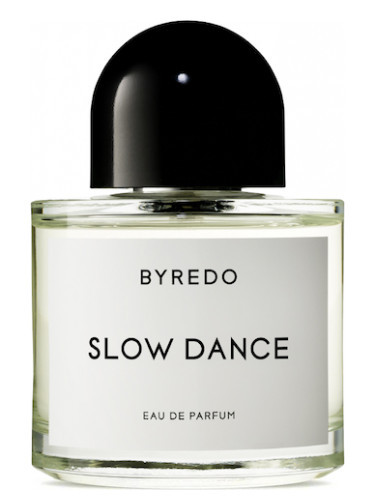
byredo slow dance
notes: (top) opoponax, cognac, (middle) labdanum, violet, geranium, (base) vanilla, patchouli, incense
profile: unisex
boozy, spiced dessert with lovely florals. it leans a bit on the sweet side, which i would love to try layering with more woody and green scents for balance.
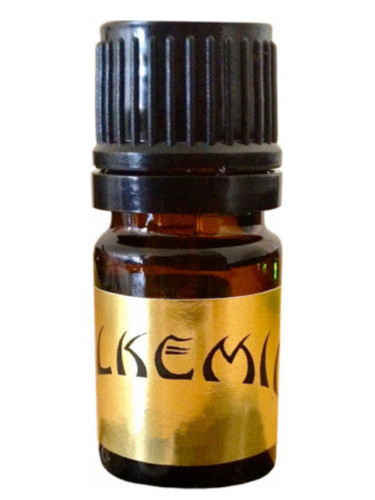

alkemia silken tent
notes: candied angelica, chrysanthemum, nardo, jasmine-scented rice pudding, blonde caramel, golden amber
profile: feminine
the herbs are mouthwatering. i seriously cannot stop smelling myself whenever i wear this one. i did have to let it age for a bit for the rice pudding note to come in, but once it did, it was creamy without being too sweet. 10/10.
#fragrance#perfume#perfume recommendations#alkemia#perfume notes#armani#armani prive#byredo#indie perfume#olfactory
10 notes
·
View notes
Text
Don't tell me you've been working out, I'm gonna wanna huff your stink :/ I will not be normal about it. I am sorry :(
2 notes
·
View notes
Text
The 8 Senses
Auditory


Visual
Gustatory
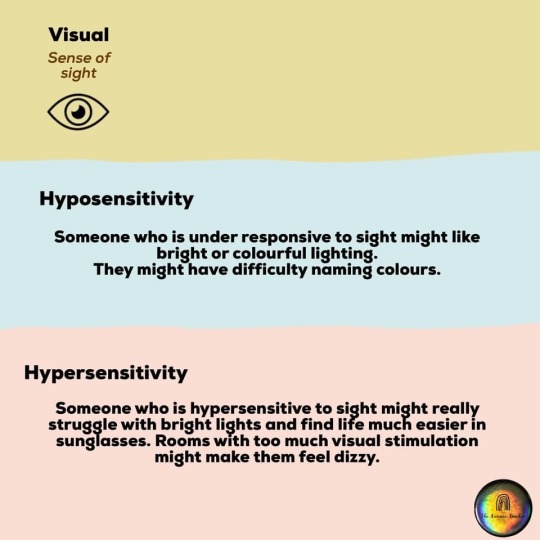

Tactile
Olfactory

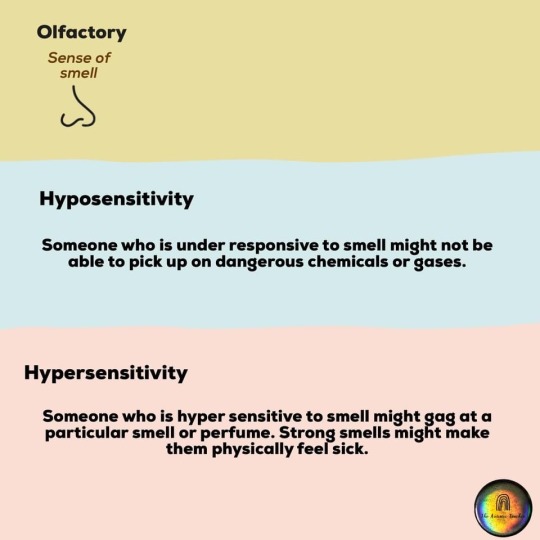
Vestibular
Proprioception


Interoception
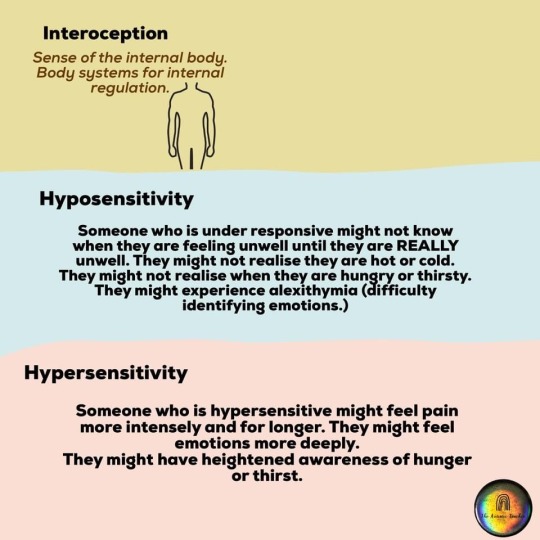
The Autistic Teacher (link wouldn’t paste, I apologize)
#autism#actually autistic#the 8 senses#olfactory#tactile#visual#auditory#gustatory#vestibular#proprioception#interoception#neurodiversity#feel free to share/reblog#source: The Autistic Teacher (Facebook)#tw bright colors#tw eye strain
211 notes
·
View notes
Text
Jan 10: Olfactory
adj: of or relating to the sense of smell
"For some peculiar reason, olfactory receptors were better for Bill than Dipper...
...That meant that sometimes when Dipper wasn't showering, the demon would get quite annoyed with the other,"
First Previous Next
2 notes
·
View notes
Text
COVID-19, Anosmia, and the Importance of Smell
Hannah Gould and Gwyn McClelland, editors of Aromas of Asia, discuss anosmia as it relates to the COVID-19 pandemic, the tricky nature of olfaction, and where the phenomenon of smell as transnational exchange began.
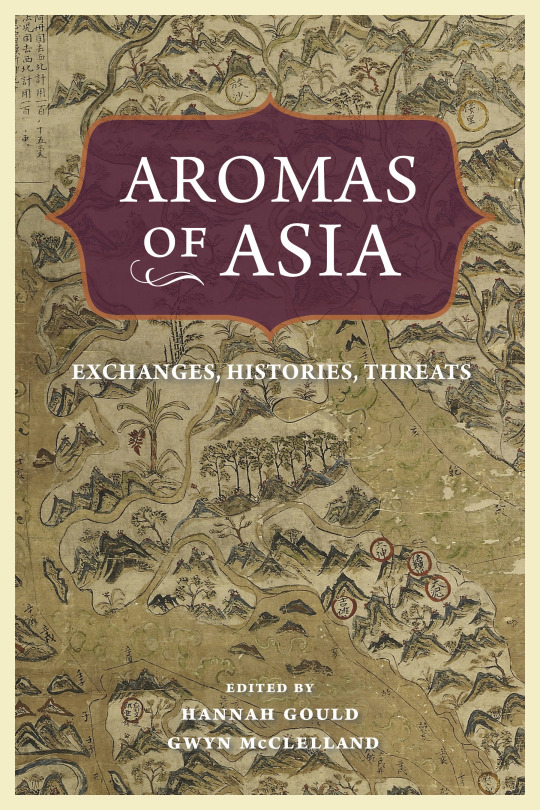
Of the many serious, and still emerging, impacts of infection with COVID-19, anosmia, or a loss of the sense of smell, is less often discussed. Yet the condition is said to affect almost half of all diagnosed patients, and although most people regain olfaction within a month, for some, anosmia lingers, transforming how they eat, drink, and interact with the world. People may also experience a condition of paranosmia, or phantom, and often unpleasant, smells.
In the introduction to our new interdisciplinary edited collection, Aromas of Asia: Exchanges, Histories, Threats, we discuss how this phenomenon speaks to the tricky nature of olfaction: its profound impact in shaping one’s everyday experience of the world and the popular dismissal of its significance. For, perhaps it is only in losing a sense that we are troubled and thus realise its significance. Anosmia is a condition that demonstrates how smell (or its lack) moves between bodies and traverses scales, as an intimate, personal experience of the world created by the transnational movement of pathogens within a global pandemic.
Smell is thus a particularly generative phenomenon to draw upon when theorizing the dynamics of transnational exchange. And this particular transnational exchange of the pandemic, of course, began in Asia.
Western cultural hierarchies and intellectual traditions have tended to elevate the importance of vision, or hearing, while marginalizing senses including smell, taste, or touch. With a few notable exceptions, contemporary scholarship still remains strongly wedded to English-language or Western scholarly concerns and contexts.
Our new collection of essays relocates the discussion of olfaction to the Asian region, considering how the mobility of olfaction makes social worlds, identifies prejudices or threats, and implements power games of scent and odor. Wherever smell is interpreted as threat, and has potential to be used to violently enforce differences in ethnicity, gender, caste, and class, questions of smell can have serious implications.
We were concerned in this work to critique sensory colonialist tropes that align Asia and its peoples with more “debased” senses, thus resisting a dichotomy of “West-vision-logic” and “Asia-smell-emotion.” Where associated with smell, Asian peoples and cultures have been historically cast in two extremes: on the one hand heavily perfumed or “stinky,” and on the other overly sanitized, odorless or antiseptic. While examining and critiquing these sensory stereotypes, our collection engages with Asia as a heterogeneous and changing complex of scentscapes that have blended together and come apart throughout history. The boundaries of this region are not presumed to exist before olfaction but rather emerge through histories of sensory exchange.
Our contributors consider periods from antiquity to the present and examine various transnational contexts across East, Southeast, and South Asian regions. We do not claim the spread as representative or exhaustive, but the chapters provide a robust cross section of the “scentscapes” that traverse the region. Thus, incisive essays and careful research was essential to achieve the methodological richness and conversation between disciplines evidenced in this book. Besides the editors, the authors, in order of their contributions, are Lorenzo Marunucci, Peter Romaskiewicz, Qian Jia, Gaik Cheng Khoo, Jean Duruz, Gwyn McClelland, Shivani Kapoor, Aubrey Tang, Saki Tanada, Adam Liebman, and Ruth E. Toulson. The disciplines brought together in this volume include anthropology, history, film studies, fine arts, food studies, literature, philosophy, political studies, and religious studies.
Strong-smelling miasmas, or drifting clouds of noxious air, have been central to human understandings of disease transmission. Well after the emergence of germ theory, fear of smells in the form of miasma continues to this day. Some commentators used olfactory evidence in positioning Chinese “wet markets” as the site of origin for COVID-19 virus. For example, in one paper in The COVID-19 Reader (2021), the writer suggests that “a lack of hygiene [at wet markets] was obvious from the smells and scattered wastes.” From this olfactory experience, the authors describe their lack of surprise that a pandemic might emerge from this place. We compare this in our introduction to another study of 2020 that shows how freshness is constructed and valued in sensory experiences of markets within China. Perceiving smells or odors as threats can reinforce, especially during the pandemic, the alterity of Asia as the other to the West. COVID-19 illustrated how olfaction is an intimately embodied, individual experience, but also a social phenomenon traveling between bodies and communities—and around the globe. In our collection, Aromas of Asia, we focus on the interconnections of sensory worlds, but we do so by offering a transnational and located approach to scentscapes in Asia, even as they are founded on mobility and exchange.
Aromas of Asia: Exchanges, Histories, Threats is now available from Penn State University Press. Learn more and order the book here: https://www.psupress.org/books/titles/978-0-271-09541-7.html. Save 30% w/ discount code NR23.
#COVID-19#COVID 19#COVID19#Pandemic#Smell#Anosmia#Miasma#Olfactory#Scent#Asia#China#PSU Press#Penn State University Press#Penn State
3 notes
·
View notes
Photo

Nasal Supply Chains
COVID-19 and geopolitics have disrupted supply chains, leading to global food, fuel, and medicine shortages. Our sense of smell also relies on a supply chain: our olfactory sensory neurons (OSNs) have to move proteins huge distances along themselves to detect smelly molecules. Here, we see OSNs from a mouse with one blocked (upper half) and one unblocked (lower half) nostril. By studying these mice with advanced microscopy, researchers showed that OSNs gather smell-detecting proteins in bubbles of membrane before wrapping the bubbles in a larger membrane – like a bag of frogspawn. These multivesicular transducosomes (MVTs), discovered for the first time, help transport the proteins needed to detect smells along OSNs. In mice, MVTs accumulate in OSNs lining blocked nostrils, but release their cargo when smells are detected in an unblocked nostril. Understanding more about this process could help us treat the loss of smell caused by conditions like COVID-19.
Written by Henry Stennett
Image from work by Devendra Kumar Maurya, Anna Berghard and Staffan Bohm
Department of Molecular Biology, Umeå University, Umeå, Sweden
Image originally published with a Creative Commons Attribution 4.0 International (CC BY 4.0)
Published in Nature Communications, November 2022
You can also follow BPoD on Instagram, Twitter and Facebook
10 notes
·
View notes
Text

"In Morocco, scents are very present. It’s the first thing you notice, it calls you. But that’s not what creates a perfume. What creates a perfume is olfactory memory, what we have known, it’s almost the same thing. You’ve lived vanilla, cinnamon, you’ve lived the scents… We have very different experiences, but the panoply of olfactory sensations is the same. Before we’re seven years old we record 500,000 scents. It’s a box. These 500,000 scents will be diffused throughout hundreds of millions of other scents. But in all those scents that you’ll smell, it’s always something that you recognize from that box of 500,000, otherwise you’ll hate it. It’s not whether something is good or bad, it’s whether you find something again that you’ve lived… "
--Serge Lutens: Perfumer/Photographer/Filmmaker/Makeup Artist
"Sometimes scent is all we have to take us back to a time."
--Tennessee Williams
[Follies Of God]
53 notes
·
View notes